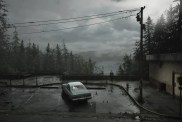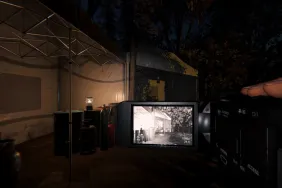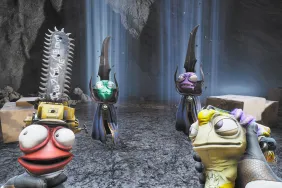Chernobylite is a difficult game to pigeonhole. Developer The Farm 51 has called it a survival horror RPG, but after spending 30 hours with the game, I wouldn’t say that’s terribly accurate because there’s also quite a strong focus on strategy. I guess a ‘science-fiction survival game with a twist of strategy, horror, and roleplaying’ is probably too long to use as a genre though.
The game is set 30 years after the nuclear disaster at Chernobyl and it’s now a dangerous place. Not only is residual radiation found throughout the entire area, with stronger pockets making some areas inaccessible, NAR soldiers regularly patrol the zones and will shoot on sight. A strange material called chernobylite is also spreading over the area and it has properties that allow for teleportation, the creation of superweapons, and even an alternate dimension. The catch is it has also created a race of monsters known as Shadows and they’re always happy to tear you apart.
Chernobylite review – A hostile wasteland
Players are put in the shoes of nuclear physicist Igor, who is determined to find out what happened to his wife who disappeared just before the disaster. When a heist into the Chernobyl Power Plant goes wrong, he is forced to retreat and reassess his options. Now hiding out in a warehouse in Pripyat, he needs to gather tools, intel, and helpful companions if his heist is to ever be successful. To do this he needs to complete missions across a handful of maps that represent different areas of the exclusion zone.
Igor isn’t the only one that can complete the missions. Any of his companions can take on missions with different rates of success depending on their strengths. This could be just exploring the zone, securing resources from NAR forces, or a story mission, but missions can be failed and any of the characters can die if it goes spectacularly wrong. Missions also have optional objectives to complete that offer XP, like locating traders, but the risk versus reward is always in the back of your mind. The only issue is that the five locations become repetitive and you’re soon running through each map trying to complete objectives as quickly as possible.
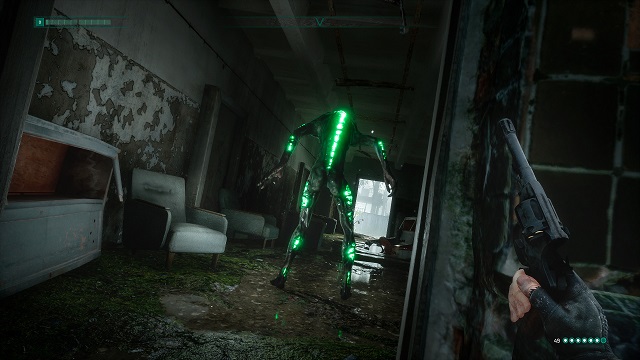
Throughout every story mission, there are tough decisions to be made. The decision-making element of the game is one of the best I’ve ever seen with genuine consequences that affect Igor’s future. Not only will Igor’s companions think of him differently, but these decisions can also affect which companions can be recruited, whether other NPC characters live or die, how future missions like the heist play out, and even which missions are available later. However, if a player doesn’t like a decision, it doesn’t have to be permanent.
Whenever Igor dies, he is transported to a memory dimension where every decision can be changed for a small price of chernobylite. Any conflicts this creates must then be resolved before Igor returns to reality. A mission that went completely wrong can even be deleted from memory and replayed in its entirety back in the real world. If conditions aren’t favorable going into the final heist, there are plenty of opportunities to change it. A player who wants to experience everything in a single playthrough will benefit the most as they find nothing becomes completely inaccessible.
The consequences of player freedom
Story missions are offered in a nonlinear fashion and it’s entirely up to the player whether they’re completed. Even the final heist can be attempted before all of the missions have been done. The only problem is that the lack of linearity creates continuity issues in terms of character relationships. One spoiler-free example was when a decision clearly angered a companion, only for that companion to congratulate our success upon Igor’s return to the warehouse. The game may have been better off with a linear mission structure rather than offering so much player freedom.
As time passes, the more the chernobylite spreads, and the number of Shadows increases. While it’s the Shadows that add the horror element and an uneasy atmosphere, the shock factor wears off after the first few encounters. Their movement is predictable, they become no more intimidating than the soldiers, and the horror element is lost completely. Theoretically, the more time Igor spends in the exclusion zone, the tougher the missions become. However, this is offset by the skills he learns from his companions and his upgraded weapons.
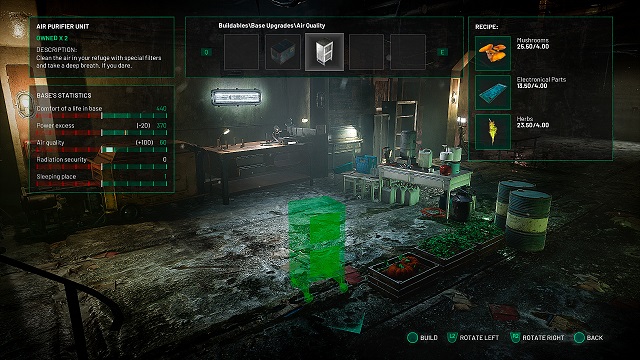
Missions aren’t everything, though, as warehouse management is as vital as mission success. There needs to be enough food to feed everyone. Their living conditions need to be comfortable. Most importantly, air quality, radiation security, and power supplies need to be adequate. Igor also needs to build the workbenches to upgrade weapons, build the latest cutting-edge technology, and keep his supplies topped up. Each of those workbenches will take a toll on at least one of these categories and satisfactory living conditions become a balancing act. With unpreferable living conditions, the chances of a companion succeeding at a mission start to fall.
Chernobylite isn’t a perfect game. Aside from the continuity issues and the horror that falls flat, there were a couple of game crashes too. However, the game has plenty more positives, including impressive decision-making, the amount of freedom with base building, and simple but satisfying team management. Chernobylite is well worth dipping into for a few hours as long as you remember the game is not meant to be a AAA experience.
-
Decision making has a clear impact
-
Simple but satisfying companion management
-
Plenty of freedom with base building
-
Horror aspects fall flat after a while
-
Nonlinear mission structure leaves continuity issues




